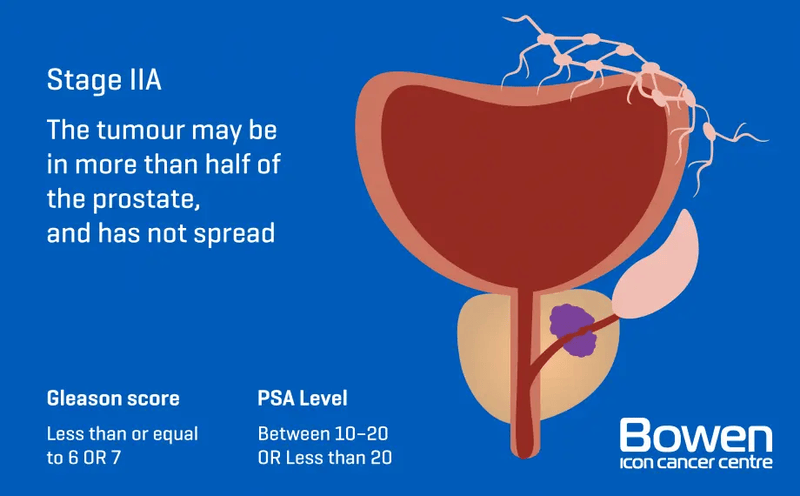Stage 2: Localized, Higher-Risk
Stage 2 prostate cancer is still confined to the prostate gland but may be larger or involve more areas of the gland. PSA levels may be elevated and biopsy results may indicate a higher Gleason score.
This stage is considered higher-risk compared to Stage 1. Early detection and monitoring are crucial to prevent progression.
What to expect: minimal or no symptoms, occasional urinary changes, more frequent monitoring and assessment.
What to do: regular PSA testing, follow-up biopsies, discuss treatment options with your doctor, and maintain a healthy lifestyle.

Image source: Bowen Icon Cancer Centre
Stage 2 is a reminder to Kiwi men: early consultation with your doctor is important, especially if you have a family history of prostate cancer.
